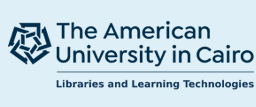-

Collecting and repatriating Egypt's past: Toward a new nationalism
Salima Ikram
Egypt has a rich and diverse cultural heritage that spans over 6,000 years. The most well known period is the Pharaonic era that lasted some 3,000 years, and that has mesmerized people thereafter. Indeed, when people think of Egypt, they rarely think of the modern state-they think of Egypt's Pharaonic past in terms of its mirabilia: pyramids and mummies that evoke the exotic and the esoteric. This perception has influenced current attitudes to the cultural remains from this era, objects and monuments that have come to be regarded as the patrimony not only of the modern-day Egyptians but also of the entire world. The same fascination is one reason why Egyptian artifacts are one of, if not the most, popular exhibits in any museum, regardless of whether the museum is in London, Paris, New York, or Berlin. © 2011 Springer Science+Business Media, LLC.
-

Adaptation and Business Model Innovation in Times of Rapid Change: Baraka Group Case Study
Ayman Ismail and Brendon Johnson
This case study presents a picture of a company in Egypt who, through difficult economic times, focused on adapting to market conditions and achieving growth through creative strategies. The entrepreneur, working under flexible conditions of a family business, utilized opportunities to reassess markets, test, and redevelop products and services based on perceived needs and desires. As more competitors attempt to enter the market, Baraka Group’s success will be contingent on the ability to constantly and creatively tackle gaps in the market.
-

Honda Power Products: Ensuring the Future of a Leading Brand in a Turbulent Market
Noha Ismail
The International Commercial and Industrial Investment Company, S.A.E (ICII) is a trading company specialized in high-end power products and construction equipment. Honda power products accounts for almost 25% percent of the company’s sales. Since the introduction of Chinese products into the Egyptian market, Honda sales have been increasing, however at a decreasing rate. ICII is facing a number of challenges related to Honda’s decreasing market share. The main challenges are configuring a marketing strategy to ensure its viability in a turbulent market and selecting growth alternative that ensures its sustainability in light of the changing market conditions.
-

Vibration-based damage detection in plates using damage location vectors
Mohammed O. Kayed, Mustafa H. Arafa, and Said M. Megahed
[abstract not available]
-

Monitoring and Medicalising Male Sexuality in Semi-Colonial Egypt
Hanan Kholoussy
[no abstract provided]
-

Malraux’s Hope: Allegory and the Voices of Silence
William Donald Melaney
André Malraux’s novel, La Condition humaine [Man’s Fate], evokes broadly Hegelian expectations concerning the possibility of political action and the dialectical resolution of long-term conflicts. However, this same novel also frustrates these same expectations when it articulates matters of style, art and politics in a Chinese setting. The “world” of the novel is not defined in terms of a unified native tradition, but its international features are historically revealing and socially significant. Moreover, the cultural subtext that underlies the novel’s plot constitutes an index for determining the nature of socio-cultural praxis under difficult conditions. Hence, Malraux’s novel can be shown to interface with cultural history in three distinct ways. First, the major protagonists in the novel embody an ambiguous but important connection with progressive ideology. Second, the cultural differences that figure prominently in the novel provide a material dimension to the network of signs that governs the structure of the work itself. Third, the emergence of “discontinuous” history in the novel complements a sense of narrative fictionality that provides the reader with a socially mediated view of historical transformation.
-

Facing Organizational Change and Stress Management: The Case of First Commercial Bank
Elham Metwally
In today’s hyper-competitive environment, understanding factors that contribute to effective management of change and achieving strategic competitiveness are critical. Based on management theories and best practices, this case study provides a detailed exploration, description, and explanation of the implementation of two electronic banking delivery systems, namely ATMs and Internet Banking, in a leading bank in Egypt. The case identifies and describes the bank’s approach to managing change through Information Technology, with regards to leadership actions, overcoming resistance to change, personal and organizational attributes, strategies, structures, business processes, culture, as well as organizational commitment. The arrangement of the case followed a question-and-answer format rather than the traditional narrative. A series of questions and answers based on the semi-structured face-to-face interviews assessed the research topic. The researcher treated both products side-by-side throughout the case, as action planning was the same for each product. Outcomes revealed great commonalities, which meant tremendous overlap and repetition, had a separate case study been presented for each product.
-

Self-aligned double patterning (SADP) friendly detailed routing
Minoo Mirsaeedi, J. Andres Torres, and Mohab Anis
[abstract not available]
-

Self-aligned double patterning (SADP) layout decomposition
Minoo Mirsaeedi, J. Andres Torres, and Mohab Anis
[abstract not available]
-

Ariika Bean Bags: A successful Egyptian Entrepreneur Capable of Regional Expansion?
Hend Mostafa and Rania S. Hussein
Since its introduction in the Egyptian market in 2011, Ariika's sales have been growing. In three years the company was able to position itself in the Egyptian market and was perceived as an international company. Ariika was targeting consumers, corporate and re-sellers and was able to acquire high market share. The success of Ariika encouraged Hassan Arslan, founder and CEO of Ariika bean bags, to consider international expansion. Arslan was considering countries in the Middle East as a good starting point for international expansion as they have similar cultures and may also have similar demands. Ariika’s brand name which is derived from Arabic origins “Ariika” and that signifies comfort, is also well recognized and easily understood in the Middle East. Ariika had only one store in Egypt and a geographical expansion could surely benefit Ariika. Alternatively Arslan wanted to build on Ariika's success by developing Ariika Home that would sell hard furniture such as tables and chairs online. Having the three options in mind, Arslan was wondering which option should he start with? If he decided to go international which countries should he consider? Should he follow the same strategy developed for the Egyptian market? If he decided to expand geographically where should he open new stores? Or should he develop the new brand Ariika Home?
-

Automatic control of an orthogonal-type robot with a force sensor and a small force input device
Fusaomi Nagata, Sho Yoshitake, Akimasa Otsuka, Keigo Watanabe, and Maki K. Habib
[abstract not available]
-

Structure-from-motion for earthwork planning
Khaled Nassar, Ebrahim A. Aly, and Younghan Jung
[abstract not available]
-

Multiobjective optimization of advanced shoring systems used in bridge construction
Khaled Nassar, Mohamed El Masry, and Yasmine Sherif
[abstract not available]
-

Developing an efficient algorithm for balancing mass-Haul diagram
Khaled Nassar, Ossama Hosny, Ebrahim A. Aly, and Hesham Osman
[abstract not available]
-

A comparative analysis of database connection pooling implementations with emphasis on the added value of aspect orientation
Lamya A. Othman, Hoda M. Hosny, and Sherif G. Aly
[abstract not available]
-

A comparative analysis between FinFET Semi-Dynamic Flip-Flop topologies under process variations
Mohamed Rabie, Ahmed Bahgat, Khaled Ramadan, Hosam Shobak, and Tarek Nasr
[abstract not available]
-

Label oriented clustering for social network discussion groups
Ahmed Rafea, Ahmed El Kholy Sherif, and G. Aly
[abstract not available]
-

On the performability of on-board train networks with fault-tolerant controllers
Tarek K. Refaat, Hassanein H. Amer, Ramez M. Daoud, and Magdi S. Moustafa
[abstract not available]
-

A reconfigurable, pipelined, conflict directed jumping search SAT solver
Mona Safar, M. Watheq El-Kharashi, Mohamed Shalan, and Ashraf Salem
[abstract not available]
-

Exploring different rule quality evaluation functions in ACO-based classification algorithms
Khalid M. Salama and Ashraf M. Abdelbar
[abstract not available]
-

A parametric DFM solution for analog circuits: Electrical driven hot spot detection, analysis and correction flow
Rami F. Salem, Ahmed Arafa, Sherif Hany, Abdelrahman Elmously, and Haitham Eissa
[abstract not available]
-

77 GHz MEMS antennas on high-resistivity silicon for linear and circular polarization
M. O. Sallam, E. A. Soliman, S. Hassan, O. El Katteb, and S. Sedky
[abstract not available]
-

Dual-band 60/77 GHz MEMS antenna on high-resistivity silicon
M. O. Sallam, E. A. Soliman, S. Hassan, and S. Sedky
[abstract not available]
-

A Comparative Analysis of Activity-Based Costing and Traditional Costing Systems: The Case of Egyptian Metal Industries Company
Khaled Samaha and Sara Abdallah
Today, organizational environments are increasingly characterized by an expanding use of advanced technologies. A company’s management accounting system should capture the underlying technology, be consistent with corporate commitment to total quality and increased automation, and promote its efforts to compete on the basis of cost, quality, and lead time. However, the recent literature reveals that traditional cost accounting systems systematically introduce serious product cost distortions, which lead to inappropriate strategic decisions. Activity-Based Costing (ABC) represents an alternative paradigm that is giving more accurate and traceable cost information. The objective of this case is to illustrate the application of ABC method in a single manufacturing organization operating in the metal industry and to compare the results of ABC with volume based costing (traditional costing) method. The results of the application highlight the weak points of volume based costing which assigns factory overhead costs using direct labor-hours or machine-hours as a cost driver. As a result, volume-based costing under-costs low-volume product (i.e. products requiring fewer direct labor hours in total), while it over-costs high-volume products (i.e. products requiring more direct labor-hours in total), and thus, a product is subsidized at the expense of others. In cost accounting this is called cross-subsidization. However, activity-based costing traces overhead consumption by each product and thus provides a more accurate per-unit overhead cost.
-

Low thermal-budget silicon sealed-cavity microencapsulation process
S. Sedky, H. Tawfik, A. Abdel Aziz, S. ElSaegh, and A. B. Graham
[abstract not available]
Printing is not supported at the primary Gallery Thumbnail page. Please first navigate to a specific Image before printing.

